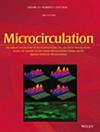Disease complications can alter vascular network morphology and disrupt tissue functioning. Microvascular diseases of the retina are assessed by visual inspection of retinal images, but this can be challenging when diseases exhibit silent symptoms or patients cannot attend in-person meetings. We examine the performance of machine learning algorithms in detecting microvascular disease when trained on statistical and topological summaries of segmented retinal vascular images.
We compute 13 separate descriptor vectors (5 statistical, 8 topological) to summarize the morphology of retinal vessel segmentation images and train support vector machines to predict each image's disease classification from the summary vectors. We assess the performance of each descriptor vector, using five-fold cross validation to estimate their accuracy. We apply these methods to four datasets that were assembled from four existing data repositories; three datasets contain segmented retinal vascular images from one of the repositories, whereas the fourth “All” dataset combines images from four repositories.
Among the 13 total descriptor vectors considered, either a statistical Box-counting descriptor vector or a topological Flooding descriptor vector achieves the highest accuracy levels. On the combined “All” dataset, the Box-counting vector outperforms all other descriptors, including the topological Flooding vector which is sensitive to differences in the annotation styles between the different datasets.
Our work represents a first step to establishing which computational methods are most suitable for identifying microvascular disease and assessing their current limitations. These methods could be incorporated into automated disease assessment tools.


